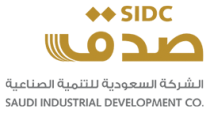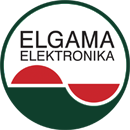Global Aircraft Engine Forging Market Worth $3.26B by 2028 - Huge Demand for Air Travel for Both Military and Commercial Purposes - ResearchAndMarkets.com
The "Aircraft Engine Forging Market Forecast to 2028 - COVID-19 Impact and Global Analysis By Forging Type, Material Type, Application" report has been added to ResearchAndMarkets.com's offering.
The global aircraft engine forging market is projected to reach US$ 3,260.7 million by 2028 from US$ 2,145.8 million in 2021; it is expected to grow at a CAGR of 6.2% from 2021 to 2028.
The global aviation industry is experiencing huge demand for air travel for both military and commercial purposes. This is leading the aircraft manufacturers to procure the latest aircraft models, and models and adopt new and robust technologies. Therefore, the production of the next generation of aircraft is expected to be one of the key trends in the aviation industry in the future. The trend is predicted to pitch over the period, leading to huge opportunities for the proliferation of aircraft component forging players.
The commercial aerospace industry is expected to prominently witness a boom in the production of a next-generation single-aisle, large twin-aisle aircraft, and jet engines. The next-generation jet engines use advanced metallic powder alloys and nickel-based superalloys. These engines is an economic model of the aircraft , which helps in enhancing fuel efficiency and aircraft performance.
For instance, Airbus and Boeing have received an order for the manufacturing of 26,000 jet engines. The production of massive, next-generation aircraft units will eventually boost the aerospace component market. Moreover, in 2019, Airbus and Dassault Aviation developed a new generation fighter (NGF) aircraft, which would replace the existing jet fighter such as the F/A-18 Hornet of Spain and Rafale of Dassault.
COVID-19's Impact on the Market
The European aerospace industry began to witness airspace inefficiencies, activity delays, and declining number of flights with the initial spread of COVID-19 in the region. The global passenger volume contracted by 60.5%, and total cost of infrastructure declined by 45.4% in 2020, increasing unit costs. This reduced demand has severely impacted the regional aircraft manufacturers thereby affecting the aircraft engine manufacturers, For instance, Safran manufacturers aircraft engines under brands such as CFM International and LEAP. The company delivered 972 units in 2020 as compared to 2172 engines in 2019 (combined CFM engines and LEAP engines).
The EU aerospace industry is anticipated to recover gradually due to a slower economic recovery and the importance of international services. IATA estimates state net losses of approximately US$ 26.9 billion in the European region in 2020. However, in 2021, the region's losses improved substantially owing to massive aircraft production by Airbus in comparison to 2020, which led the aircraft engine manufacturers to supply adequate volumes of engines. This ultimately boosted the aircraft engine forging market players to experience growth in their revenues.
Industry Segmentation
The global aircraft engine forging market has been segmented into five major regions - North America, Europe, APAC, Middle East & Africa, and South America. In 2020, North America led the market, followed by Asia Pacific and Europe, respectively. The presence of well-established economies such as the US and Canada, and high focus on the aerospace & defense sector are the major factors contributing to the aircraft engine forging market growth in this region.
Owing to the higher standards of living in North America, airplanes are the most widely used means of transport for domestic and international travel. Hence, the demand for commercial aircraft for passenger travel and cargo services is high in this region. Further, the US is one of the world's most powerful nations in terms of military and defense abilities.
North America is also a hub of a few of the world's largest aircraft and helicopter manufacturers, such as Boeing, Textron, Gulfstream, Lockheed Martin, Northrop Grumman, Piper Aircraft Inc., Cirrus Design Corporation, Electric Aircraft Corporation, and Bombardier. Hence, the presence of major aircraft manufacturers and increasing production of commercial aircraft due to the growing demand for the same are the two major factors bolstering the aircraft engine forging market growth in this region.
The key players operating in the global aircraft engine forging market profiled in the market study include All Metals & Forge Group, ATI Metals, Doncasters Group Ltd, Farinia Group, Lisi Aerospace, Otto Fuchs GmbH, Pacific Forge Incorporated, and Precision Castparts Corp.
Reasons to Buy
- Save and reduce time carrying out entry-level research by identifying the growth, size, leading players and segments in the global aircraft engine forging market
- Highlights key business priorities in order to assist companies to realign their business strategies
- The key findings and recommendations highlight crucial progressive industry trends in the global aircraft engine forging market, thereby allowing players across the value chain to develop effective long-term strategies
- Develop/modify business expansion plans by using substantial growth offering developed and emerging markets
- Scrutinize in-depth global market trends and outlook coupled with the factors driving the market, as well as those hindering it
- Enhance the decision-making process by understanding the strategies that underpin commercial interest with respect to client products, segmentation, pricing and distribution
Companies Profiled
- All Metals and Forge Group
- ATI
- Doncaster Group Ltd.
- Farinia Group
- Lisi Aerospace
- Otto Fuchs GmbH
- Pacific Forge Incorporated
- Precision Castparts Corp.
- Safran
- VSMPO-AVISMA Corporation
For more information about this report visit https://www.researchandmarkets.com/r/ilom0j
View source version on businesswire.com: https://www.businesswire.com/news/home/20220228005780/en/





